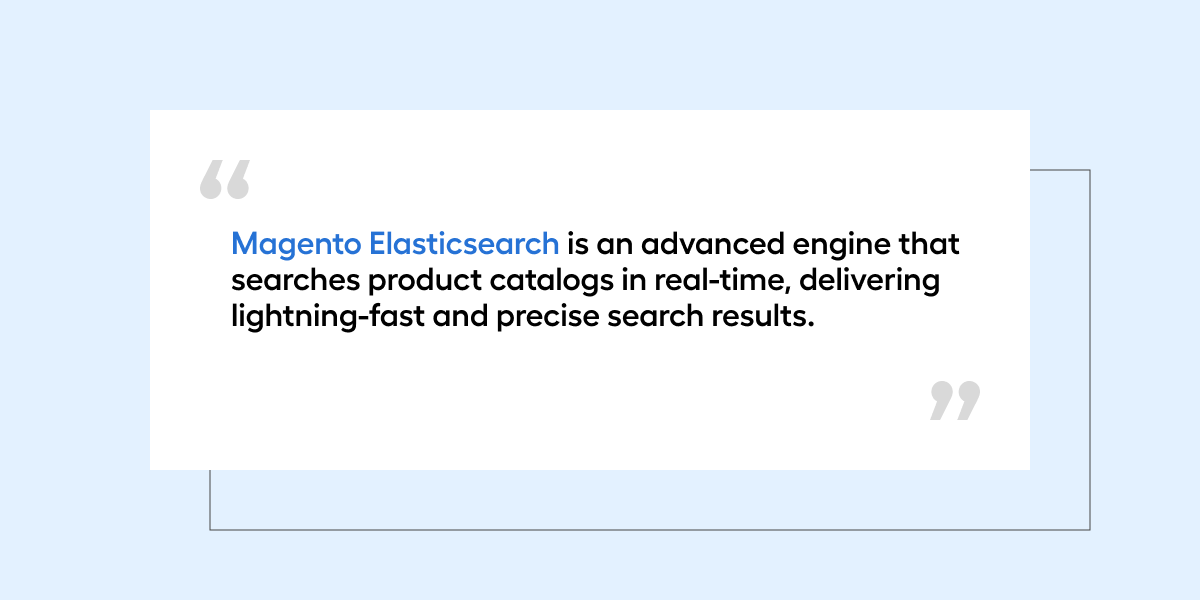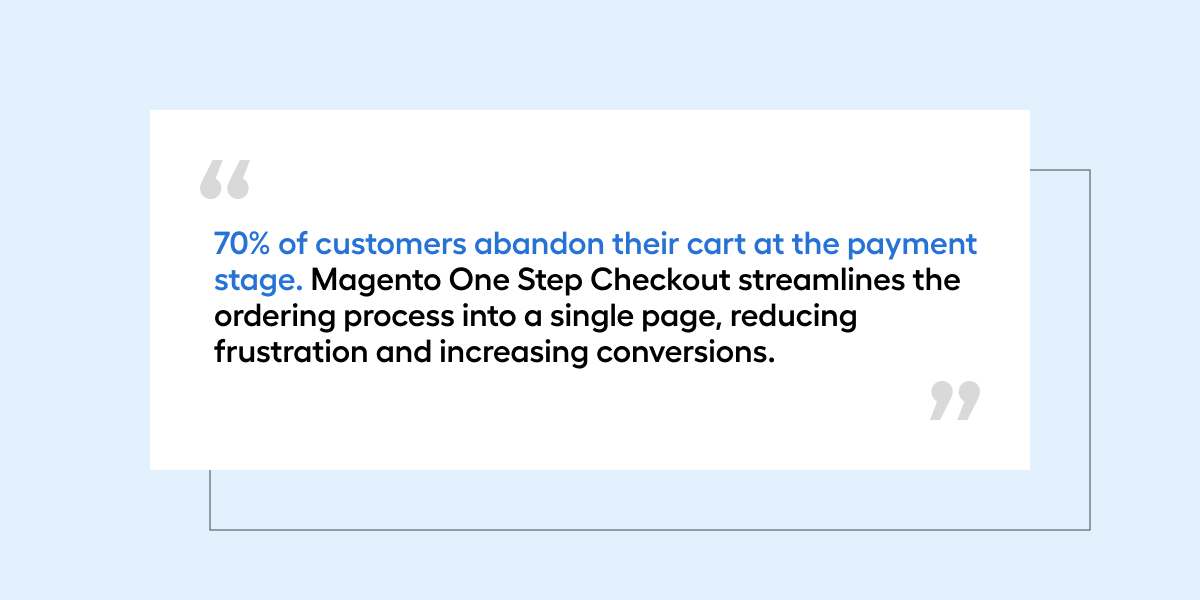Table of Contents:
- What is Magento in 2025?
- Expanding Magento 2 – Why is it worth it?
- Magento Elasticsearch. Lightning-fast real-time results
- Magento One Step Checkout. Shopping in one step
- Magento 2 Mega Menu. Clear navigation
- Common mistakes – how to avoid them?
- Customer-oriented Magento platform
The report “E-commerce in Poland 2024” clearly shows that among the most important factors influencing the choice of an online store are: an easy ordering process and fast payment methods. The question is: what functionalities of Magento should be implemented to effectively meet these real customer needs?
What is Magento in 2025?
Magento is an advanced eCommerce system that has evolved from a simple open-source project to a comprehensive and integrated component of the Adobe ecosystem. Currently, the platform is available in two versions:
Magento Open Source (formerly Community Edition) – a free, flexible version for businesses, available without licensing fees. However, it is important to remember that while the system itself is free, its implementation and maintenance require investment in hosting, development, and optimization. The latest version, Magento Open Source 2.4.7, supports the PHP 8.3 update while also supporting PHP 8.2, but only until December 2025.
Adobe Commerce (formerly Magento Commerce / Enterprise Edition) – a commercial version that offers advanced features, built-in analytical tools, and a high level of scalability. It comes in two variants:
- On-premise – requires hosting provided by an external provider.
- Cloud – cloud-based infrastructure managed by Adobe.
The latest Magento version fully supports the headless commerce model, allowing businesses to separate backend business logic from frontend presentation. This enables the development of customized storefronts using modern frontend technologies like React, Vue.js, or Angular. The platform also follows Progressive Web Apps (PWA) standards.
Additionally, Magento 2 is fully integrated with the Adobe Experience Cloud ecosystem, enabling the use of advanced analytical tools, including:
- Adobe Analytics – in-depth analysis of customer behavior,
- Adobe Target – A/B testing and content personalization,
- Adobe Campaign – marketing automation.
Expanding Magento 2 – Why is it worth it?
The true potential of Magento 2 lies in its expandability. Thanks to its modular architecture, which combines various patterns, including MVC (Model-View-Controller) and MVVM (Model-View-ViewModel), developers have complete freedom to customize functionalities. They can add their own modules, install extensions, and integrate external systems – all without altering the core code. Moreover, Magento works seamlessly with GraphQL and REST API, making it easier to connect with ERP, CRM, or marketing automation tools. In other words, your store can grow alongside your business.
The basic version of Magento provides a solid foundation, but if you want to fully leverage the platform's potential, it is worth considering the installation of additional extensions. In this article, we will look at three functionalities that can significantly enhance your store's performance: Magento Elasticsearch, One Step Checkout, and Mega Menu.
Magento Elasticsearch. Lightning-fast real-time results
A large portion of customers visit the store with a clear purchasing goal. They know the model name, technical specifications, or other details of the product they are looking for. They are not interested in browsing the entire offer but rather in quickly comparing prices between your store and competitors.
At the same time, the growing popularity of AI-based tools, such as ChatGPT or similar conversational solutions, creates new expectations for communication with online stores. Users are increasingly abandoning traditional category navigation and filters in favor of entering detailed, contextual queries. They expect the search engine to accurately interpret complex phrases, such as “red women's wool sweater in size L with delivery in 2 days,” and present relevant results, eliminating the need for additional filtering. This is where Magento Elasticsearch comes in, an advanced engine that searches product catalogs in real-time, providing fast and accurate results.
This is made possible by utilizing Apache Lucene (an open-source full-text search library) to check vast datasets. It offers advanced features, including fuzzy search, autocomplete, and relevance-based results.
Benefits of implementing Magento Elasticsearch:
- significantly faster and more accurate search results,
- easy scalability,
- intelligent filtering and sorting of results,
- error handling in searches,
- lower bounce rate,
- improved SEO due to better data structure.
Important: Magento 2.4 requires Elasticsearch 7.6.x as the default catalog search engine, which can be disabled if necessary. Older versions, such as 5.x and 6.x, have been deprecated and are not supported in the current version of the platform.

Magento One Step Checkout. Shopping in one step
Since 2014, the cart abandonment rate has been steadily increasing, and in 2024 it has already exceeded over 70%. Each additional step during the checkout process increases the risk that the customer will abandon the purchase. The standard checkout process in Magento requires going through several steps, which can be frustrating. Magento One Step Checkout simplifies this process, making all necessary information (customer data, delivery choice, payment method, and order summary) available at once, without the need to navigate through multiple screens.
What does this look like in practice? In the default view, the checkout process is divided into two pages, one for customer and delivery information, and the other for payment methods. With Magento One Step Checkout, all information is on one page, typically divided into three columns – which can be customized according to the store's needs and design preferences.
Benefits of implementing One Step Checkout:
- reduction in cart abandonment,
- intelligent and unified shopping interface,
- advanced delivery process personalization,
- appearance tailored to personal preferences,
- ability to add gift messages from the store, order comments, and CMS blocks in various parts of the page.

Magento 2 Mega Menu. Clear navigation
A common reason for cart abandonment is a lack of clarity on the website. The Mega Menu allows for the creation of an intuitive, extensive menu structure that makes it easier for users to navigate the store. It provides the ability to add graphics, icons, banners, and special promotions. This not only improves the aesthetics of the site but also increases customer engagement.
Popular extensions, such as Amasty Mega Menu Pro or Codazon Mega Menu Pro, offer drag-and-drop functionality, meaning you can easily customize the menu's appearance to match your brand's visual identity.
Benefits of implementing Magento 2 Mega Menu:
- ability to visually highlight categories and promotions,
- adding images, banners, and other multimedia elements,
- impact on SEO due to better navigation structure,
- enhanced interactive features, e.g., displaying categories on hover,
- built-in tools for managing appearance from the admin level.

Common mistakes – how to avoid them?
Functionalities of Magento, such as Magento One Step Checkout or Mega Menu, raise the standard of user experience on the online store. The condition is one: proper implementation. Here are the most common pitfalls that eCommerce owners and developers may encounter when implementing and expanding the platform:
Lack of connection between changes on the site and user needs
Before expanding, it is worth analyzing the user journey, conversion rates, and real customer needs. Otherwise, it is easy to waste the budget on implementations that do not solve real problems and do not translate into increased sales.
Incompatible or low-quality modules
It is important to check the provider's reputation, verify the frequency of updates, and read reviews of functionalities. Additionally, it must be compatible with the version of Magento being used and with other installed modules. A cheaper module may turn out to be more expensive to maintain due to necessary fixes and adjustments.
Neglecting performance testing and optimization
Before implementing new functionalities, comprehensive performance testing should be conducted. This ensures that changes do not negatively impact page load times and server performance. It is also worth remembering to use caching solutions to improve store performance (e.g., Varnish or Redis).
Customer-oriented Magento platform
At Advox Studio, we implement advanced modules (including those designed from scratch). We ensure their compatibility, performance, and real benefits in the spirit of eCommerce 360.
If you are considering switching to Magento – now might be the best time. Contact us, and we will advise you on how to build and develop a store that addresses the real problems of your customers.



